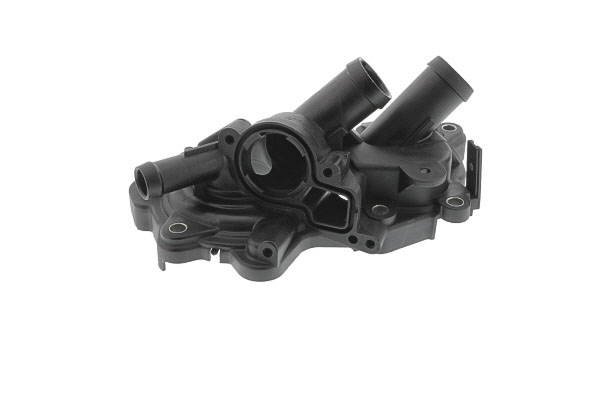Skoda Kamiq: problems
Reliability Skoda Kamiq: common problems, issues symptoms and faults
- Problems with the start-stop function: can occur as early as 20-30,000 km.
- Excessive tyre wear: often noticeable from 30-50,000 km, especially with incorrect wheel alignment.
- Malfunction of the parking assistance: These often occur after 40-60,000 km, often due to defective sensors.
- Problems with the electric power steering: These can occur after 70-90,000 km, often due to defective sensors.
Problems with the Škoda Kamiq: 1.0 TSI and 1.5 TSI
The smaller TSI engines with 1.0 and 1.5 litre displacement can occasionally have problems with the turbocharger. These usually occur between 60,000 and 100,000 km. Symptoms are a loss of power and increased oil consumption. In some cases, the turbocharger can also fail completely.
Regular oil changes and the use of high-quality oils can help to extend the service life of the turbocharger. If it is defective, the turbocharger usually has to be replaced.
Problems with the Škoda Kamiq: 3-cylinder engines
The 3-cylinder engines (1.0 TSI) can tend to vibrate and make more noise. This is due to the design and occurs more frequently at low speeds.
Regular maintenance and the use of high-quality fuel can help to reduce vibrations. In some cases, adjusting the engine mounts or using sound-absorbing mats can also help.
Issues with the Škoda Kamiq: timing chain
The timing chain in TSI engines can stretch, which can cause a rattling noise during a cold start. This complication often occurs between 100,000 and 150,000 km. In rare cases, the chain can also jump, which can cause serious engine damage.
Preventive replacement of the timing chain and tensioner system at around 100,000 km can avoid expensive consequential damage. Regular oil changes are also important.
Problems with the Škoda Kamiq DSG transmission
The 7-speed DSG transmission can occasionally have difficulties with jerky gear changes or delayed start-up. These complications often occur between 50,000 and 100,000 km.
A software update of the transmission control unit can usually help. It is also important to change the transmission fluid and filter according to the manufacturer's specifications.

Issues with the automatic transmission on Škoda Kamiq
In models with a classic automatic transmission, errors in the transmission control unit can occur from around 120,000 km, which can lead to harsh shifting.
A software update of the transmission control unit can often fix this problem. In some cases, it may also be necessary to replace the control unit or the mechatronics.
Problems with the Škoda Kamiq: rear brakes
Premature wear of the rear brake discs and pads is not uncommon, often after just 30,000 to 50,000 km.
Regular inspection and timely replacement of brake discs and pads is important. Using high-quality brake components can also extend the lifespan. After long periods of inactivity, the brakes should be cleaned by applying the brakes forcefully several times to remove any corrosion.
Faults with the Škoda Kamiq: software and infotainment
Occasionally, problems with the infotainment system may occur, such as crashes, malfunctions or errors when updating the software. These problems can occur early on, often within the first 30,000 km.
Regular software updates can fix many of these errors. Restarting the system or resetting to factory settings can help with crashes. In some cases, repair or replacement of hardware components may be necessary.
Problems with the Škoda Kamiq: Bluetooth
Some owners report difficulties with the Bluetooth connection, especially when pairing smartphones or using Apple CarPlay or Android Auto.
A software update of the infotainment system can often help. Deleting all paired devices and pairing them again can also fix failures. In rare cases, there may be a hardware defect that requires repair.

Additional common faults in the Škoda Kamiq:
Based on the reviews of Škoda Kamiq drivers, we present an overview of additional possible issues:
- Leaks at the water cooler: often occur after 80-100,000 km, especially in older models.
- Central locking system failures: These can occur as early as 50-70,000 km, often due to defective door locks or control units.
- Turbocharger problems in petrol engines: These typically occur after 100-120,000 km.
- Defective lambda sensors: These can lead to complications after just 60-80,000 km, especially in petrol engines.
- Problems with the air conditioning system: These can sometimes occur after just 40-60,000 km, often caused by leaks or compressor failures.
- Malfunctions of the electric windows: These usually occur after 70-90,000 km, especially in the rear doors.
These problems are not to be expected in every vehicle, but they can occur in some cases. Regular maintenance and inspection can help to identify and rectify many of these issues at an early stage.






















